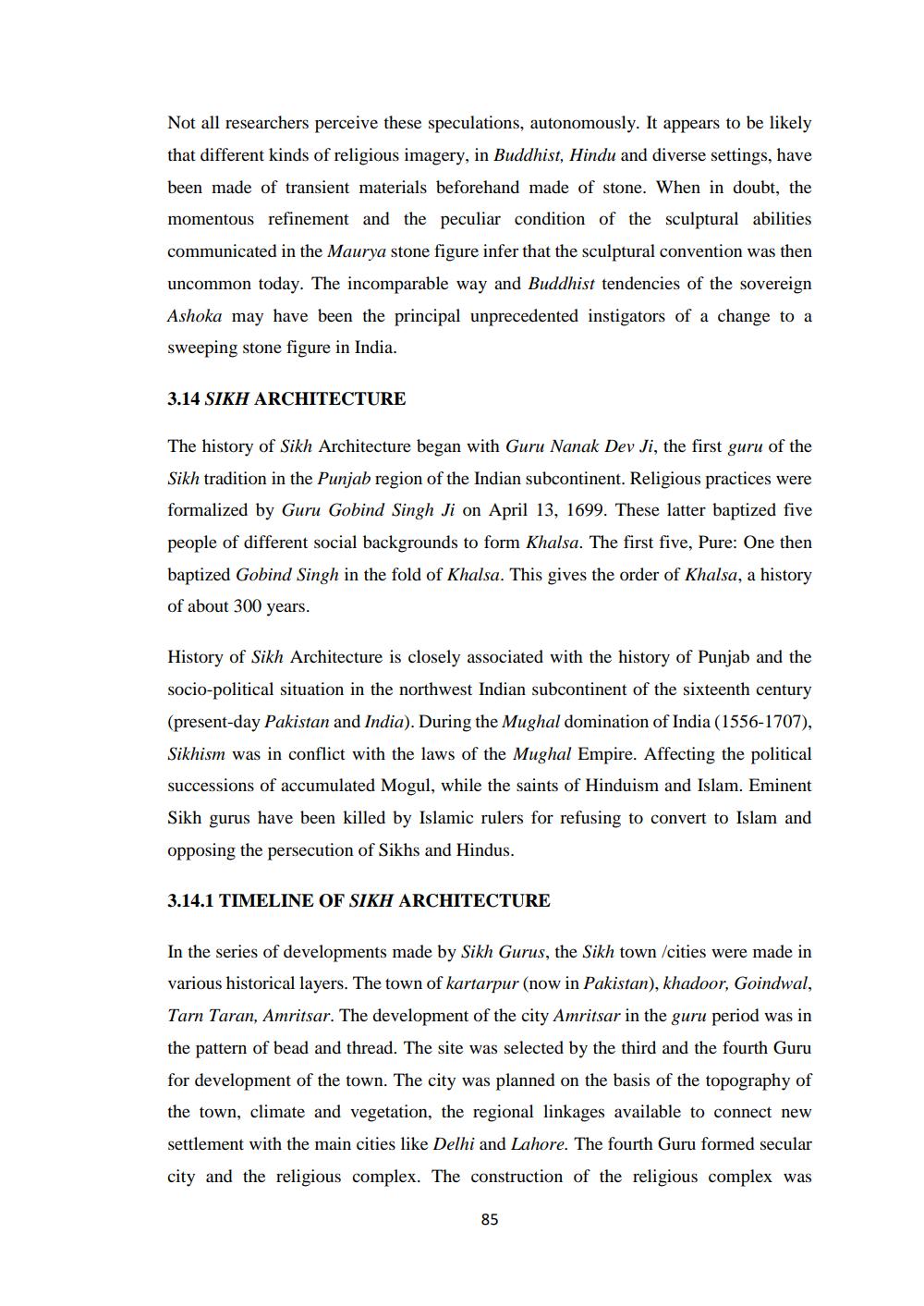________________
Not all researchers perceive these speculations, autonomously. It appears to be likely that different kinds of religious imagery, in Buddhist, Hindu and diverse settings, have been made of transient materials beforehand made of stone. When in doubt, the momentous refinement and the peculiar condition of the sculptural abilities communicated in the Maurya stone figure infer that the sculptural convention was then uncommon today. The incomparable way and Buddhist tendencies of the sovereign Ashoka may have been the principal unprecedented instigators of a change to a sweeping stone figure in India.
3.14 SIKH ARCHITECTURE
The history of Sikh Architecture began with Guru Nanak Dev Ji, the first guru of the Sikh tradition in the Punjab region of the Indian subcontinent. Religious practices were formalized by Guru Gobind Singh Ji on April 13, 1699. These latter baptized five people of different social backgrounds to form Khalsa. The first five, Pure: One then baptized Gobind Singh in the fold of Khalsa. This gives the order of Khalsa, a history of about 300 years.
History of Sikh Architecture is closely associated with the history of Punjab and the socio-political situation in the northwest Indian subcontinent of the sixteenth century (present-day Pakistan and India). During the Mughal domination of India (1556-1707), Sikhism was in conflict with the laws of the Mughal Empire. Affecting the political successions of accumulated Mogul, while the saints of Hinduism and Islam. Eminent Sikh gurus have been killed by Islamic rulers for refusing to convert to Islam and opposing the persecution of Sikhs and Hindus.
3.14.1 TIMELINE OF SIKH ARCHITECTURE
In the series of developments made by Sikh Gurus, the Sikh town/cities were made in various historical layers. The town of kartarpur (now in Pakistan), khadoor, Goindwal, Tarn Taran, Amritsar. The development of the city Amritsar in the guru period was in the pattern of bead and thread. The site was selected by the third and the fourth Guru for development of the town. The city was planned on the basis of the topography of the town, climate and vegetation, the regional linkages available to connect new settlement with the main cities like Delhi and Lahore. The fourth Guru formed secular city and the religious complex. The construction of the religious complex was
85




